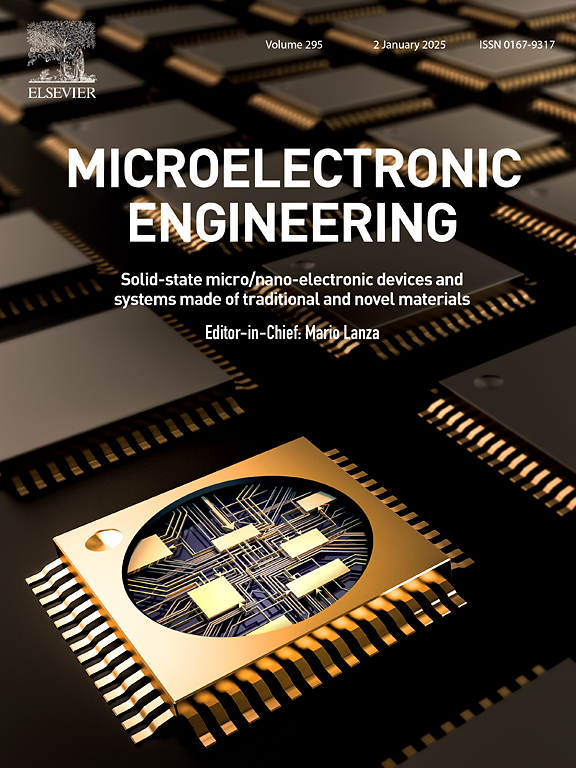Optimized fabrication of subwavelength slanted gratings via laser interference lithography and faraday cage-assisted etching
IF 3.1
4区 工程技术
Q2 ENGINEERING, ELECTRICAL & ELECTRONIC
引用次数: 0
Abstract
Subwavelength slanted gratings are crucial components in devices such as augmented reality systems and optoelectronic sensors due to their high diffraction efficiency and compact design. However, their fabrication is often hindered by high costs and limited structural control. This paper presents a novel fabrication method that combines a laser interference lithography (LIL) process, optimized using a two-dimensional lithography simulation model, with a Faraday cage-assisted reactive ion etching (RIE) process. The simulation model integrates exposure intensity analysis under the standing wave effect with photoresist contrast curve characteristics, enabling accurate simulation of photoresist patterns and providing precise feedback on exposure time and the angle between exposure light beams to achieve precise control of key parameters, such as period and duty cycle. Compared to traditional models, it reduces complexity while delivering high accuracy. The LIL process optimized by this model achieves negligible period error and a duty cycle error . Faraday cage-assisted RIE further enhances control over grating height and tilt angle, achieving near-zero deviations. This scalable and cost-effective method provides a reliable solution for fabricating high-precision subwavelength slanted gratings, advancing their practical applications in sophisticated optical systems.

利用激光干涉光刻和法拉第笼辅助蚀刻优化亚波长倾斜光栅的制备
亚波长倾斜光栅由于其高衍射效率和紧凑的设计而成为增强现实系统和光电传感器等器件的关键部件。然而,它们的制造往往受到高成本和有限的结构控制的阻碍。本文提出了一种新的制造方法,该方法将激光干涉光刻(LIL)工艺与法拉第笼辅助反应离子蚀刻(RIE)工艺相结合,并利用二维光刻模拟模型进行优化。仿真模型将驻波效应下的曝光强度分析与光刻胶对比曲线特性相结合,实现了光刻胶模式的精确模拟,并提供了曝光时间和曝光光束夹角的精确反馈,实现了周期、占空比等关键参数的精确控制。与传统模型相比,它在提供高精度的同时降低了复杂性。经该模型优化后的LIL过程周期误差可忽略,占空比误差≤0.01。法拉第笼辅助RIE进一步增强了对光栅高度和倾斜角度的控制,实现了接近零的偏差。这种可扩展且经济高效的方法为制造高精度亚波长倾斜光栅提供了可靠的解决方案,促进了其在复杂光学系统中的实际应用。
本文章由计算机程序翻译,如有差异,请以英文原文为准。
求助全文
约1分钟内获得全文
求助全文
来源期刊

Microelectronic Engineering
工程技术-工程:电子与电气
CiteScore
5.30
自引率
4.30%
发文量
131
审稿时长
29 days
期刊介绍:
Microelectronic Engineering is the premier nanoprocessing, and nanotechnology journal focusing on fabrication of electronic, photonic, bioelectronic, electromechanic and fluidic devices and systems, and their applications in the broad areas of electronics, photonics, energy, life sciences, and environment. It covers also the expanding interdisciplinary field of "more than Moore" and "beyond Moore" integrated nanoelectronics / photonics and micro-/nano-/bio-systems. Through its unique mixture of peer-reviewed articles, reviews, accelerated publications, short and Technical notes, and the latest research news on key developments, Microelectronic Engineering provides comprehensive coverage of this exciting, interdisciplinary and dynamic new field for researchers in academia and professionals in industry.
 求助内容:
求助内容: 应助结果提醒方式:
应助结果提醒方式:


